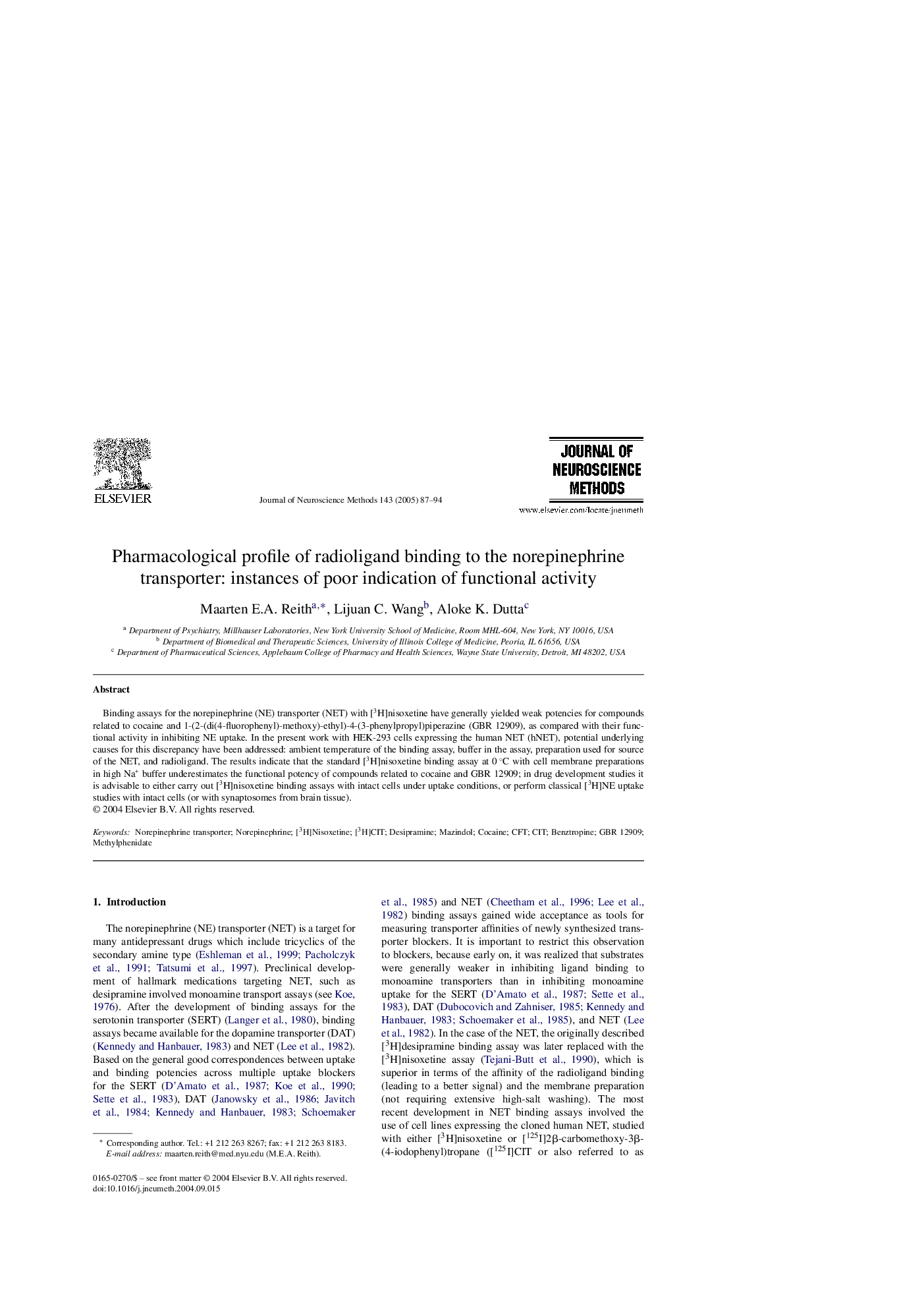| Article ID | Journal | Published Year | Pages | File Type |
|---|---|---|---|---|
| 9424333 | Journal of Neuroscience Methods | 2005 | 8 Pages |
Abstract
Binding assays for the norepinephrine (NE) transporter (NET) with [3H]nisoxetine have generally yielded weak potencies for compounds related to cocaine and 1-(2-(di(4-fluorophenyl)-methoxy)-ethyl)-4-(3-phenylpropyl)piperazine (GBR 12909), as compared with their functional activity in inhibiting NE uptake. In the present work with HEK-293 cells expressing the human NET (hNET), potential underlying causes for this discrepancy have been addressed: ambient temperature of the binding assay, buffer in the assay, preparation used for source of the NET, and radioligand. The results indicate that the standard [3H]nisoxetine binding assay at 0 °C with cell membrane preparations in high Na+ buffer underestimates the functional potency of compounds related to cocaine and GBR 12909; in drug development studies it is advisable to either carry out [3H]nisoxetine binding assays with intact cells under uptake conditions, or perform classical [3H]NE uptake studies with intact cells (or with synaptosomes from brain tissue).
Keywords
Related Topics
Life Sciences
Neuroscience
Neuroscience (General)
Authors
Maarten E.A. Reith, Lijuan C. Wang, Aloke K. Dutta,
